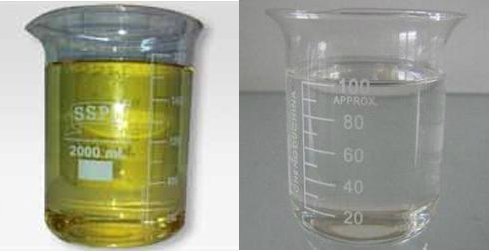In a process for the separation of C2+, C3+ or C4+ hydrocarbons from a gas stream containing light hydrocarbons and, if desired, of components boiling lower than methane, in which the gas stream, being under an elevated pressure, is cooled, partially condensed and separated in a phase separator into a liquid and a gaseous fraction; the gaseous fraction is engine expanded, and the liquid fraction is fractionated by rectification into a product stream containing substantially C2+, C3+ or C4+ hydrocarbons and a residual gas stream containing predominantly lower boiling components, the improvement comprising subjecting the gaseous fraction forming after partial condensation, before engine expansion thereof, to heat exchange with the engine expanded gaseous fraction, thereby cooling said gaseous fraction and separating additional components which condense out before the engine expansion stage.

C4 Cut produced in Ethylene production planets by steam cracking of naphtha. It is a mixture of C4 hydrocarbons mainly 1,3- butadiens, Iso Butene, Butane.
| Component | Specification |
| 1,3-Butadiene | 45.1 %wt |
| Methyl-Acetylene | 0.12 %wt |
| Propadiene | 0.02 %wt |
| Propylene | 0.1 %wt |
| Propane | 0.03 %wt |
| Vinyl-Acetylene | 1.13 %wt |
| i-Butene | 19.2 %wt |
| 1 Butene | 9.16 %wt |
| Cis2-Butene | 1.86 %wt |
| Trans2-Butene | 2.58 %wt |
| i-Butane | 3.94 %wt |
| n-Butane | 16.56 %wt |
| C5-diolefins | 0.06 %wt |
| Pentenes | 0.1 %wt |
| Pentanes | 0.02 %wt |
| 2-methyl-butene | 0.03 %wt |
| Total | 100.01 %wt |
C5/C9, Aliphatic/Aromatic Resins |
||
|
C5 aliphatic and C9 aromatic resins can be modified by mixing the two feed streams together at a carefully chosen ratio to produce hybrid polymers. This ratio determines the aliphatic/aromatic balance of the resin, which is an essential determinant of the resin’s compatibility. The MMAP and DACP cloud points are the method used to characterize C5/C9 resins. As the cloud points decrease, the compatibility with polar and aromatic polymers increases. This variation in aliphatic and aromatic composition accounts for solubility differences that enable these products to be useful in natural rubber, styrene butadiene rubber (SBR), nitrile-butadiene rubber (NBR), block copolymers, and ethylene vinyl acetate (EVA) for hot melt systems. The solubility and stability of C5/C9 hydrocarbon resins makes them especially useful in producing hot melt adhesives for nonwoven product construction based on styrene-butadiene-styrene (SBS) block copolymers. These resins develop superior tack in SBS systems as well as reducing the melt viscosity. Straight C5 aliphatic resins or C9 aromatic resins cannot perform both of these functions simultaneously. Mixed aliphatic/aromatic resins are manufactured with varying proportions of the previously described C5 and C9 feedstocks to produce resins with a range of softening points and molecular weights. |
||

No comment